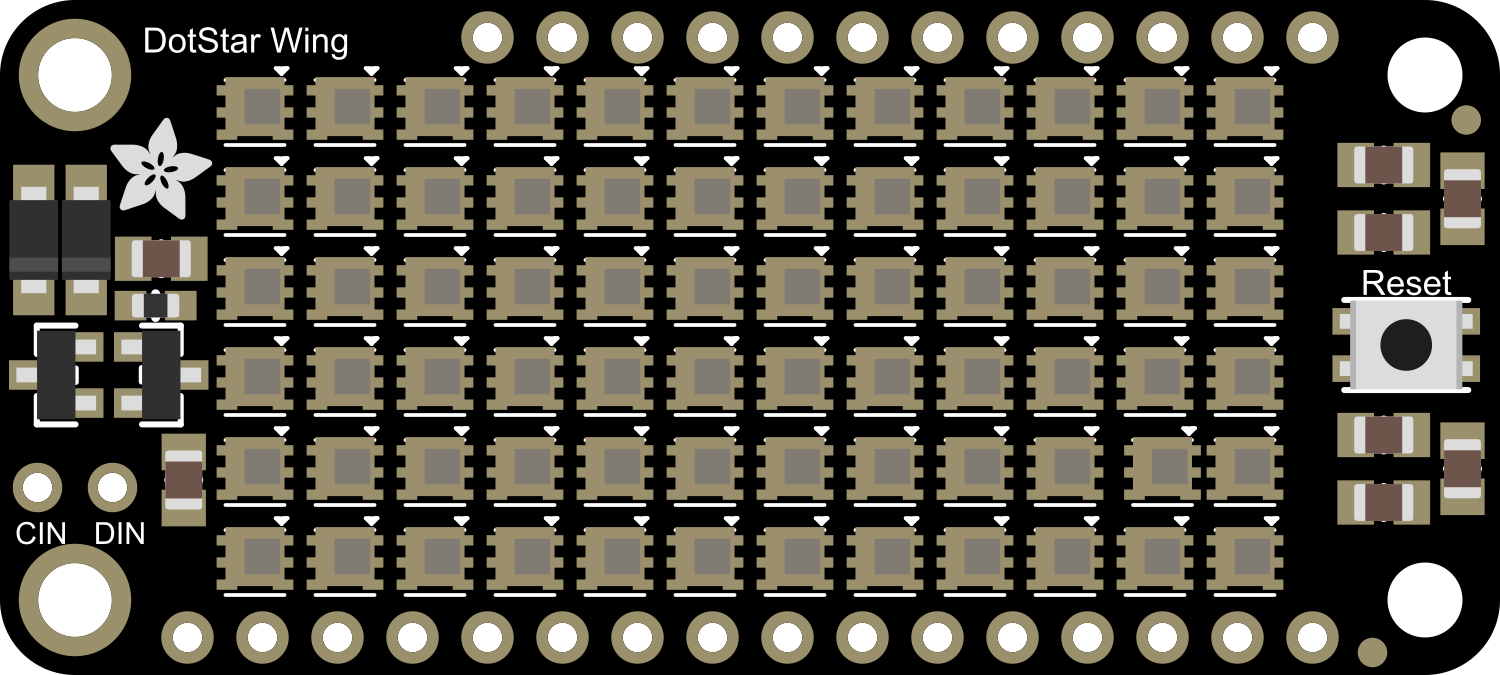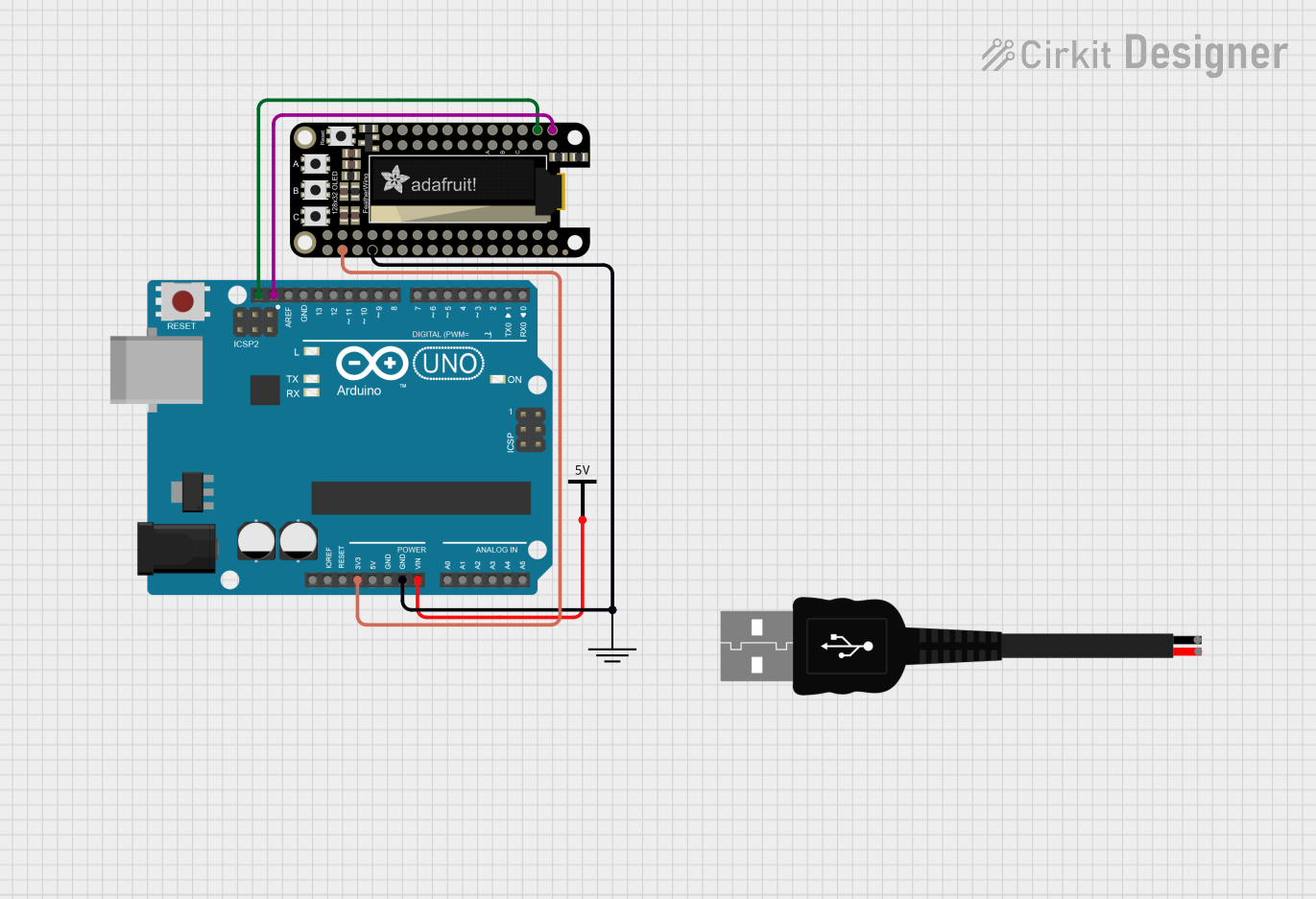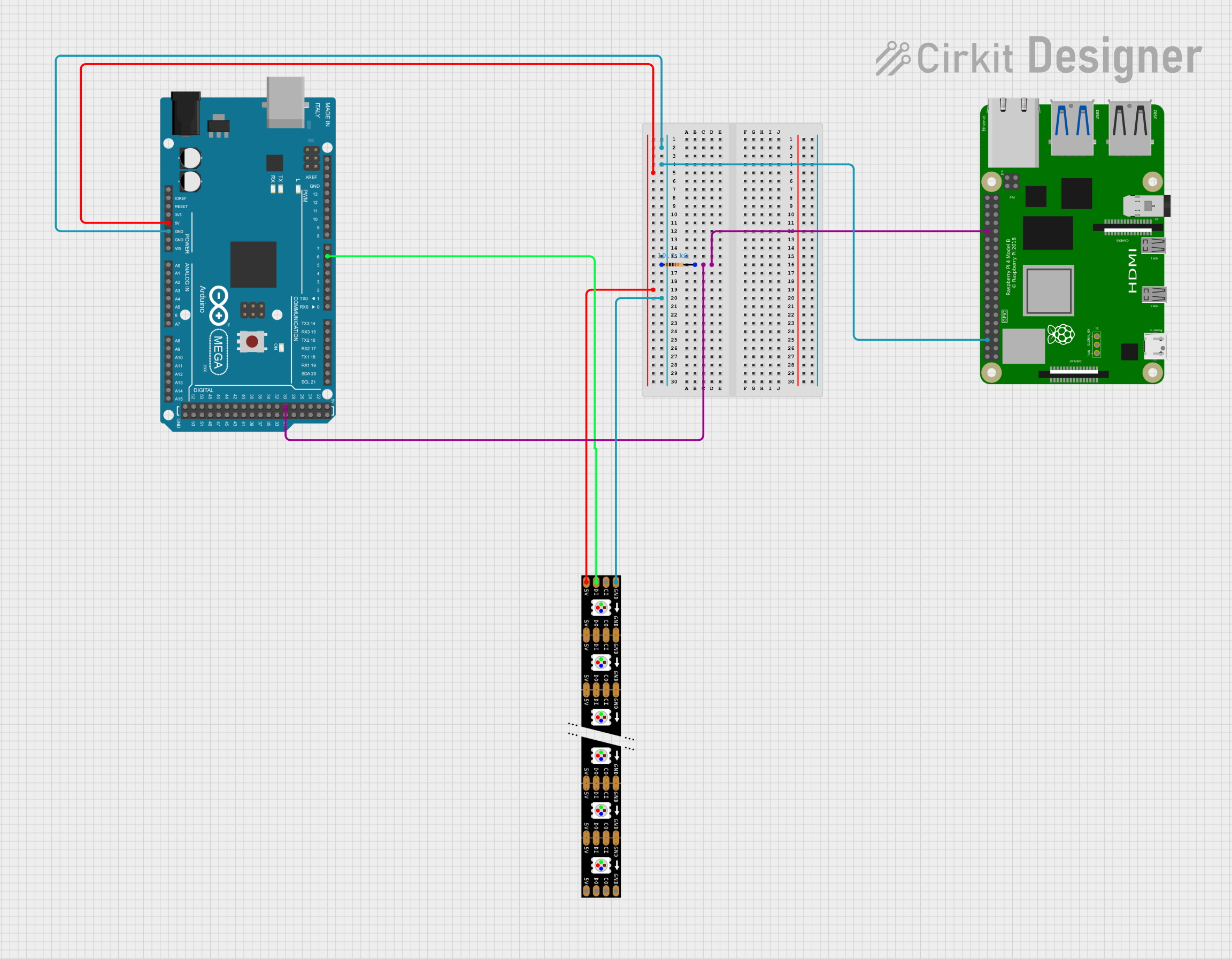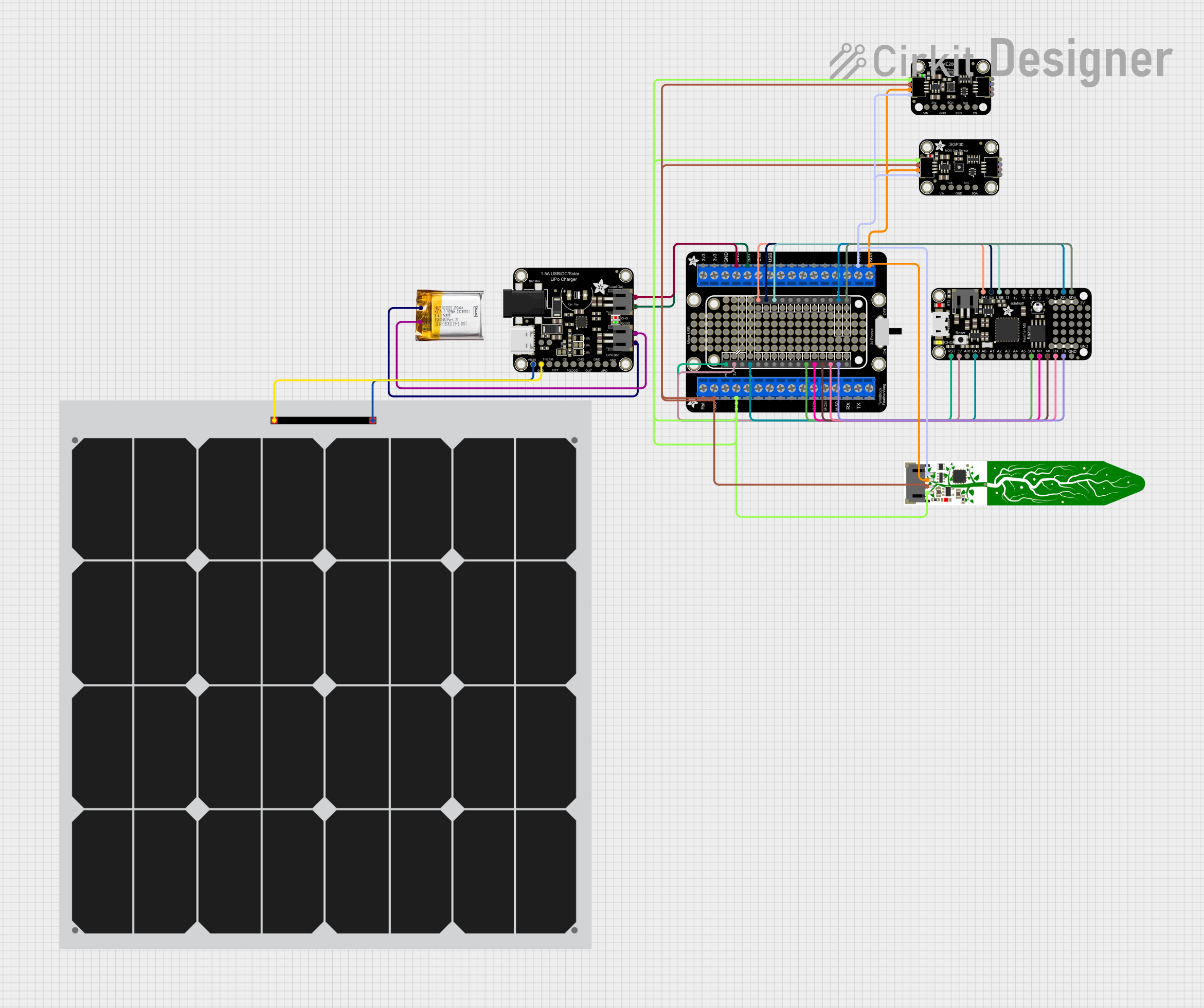
How to Use Adafruit DotStar Wing: Examples, Pinouts, and Specs

 Design with Adafruit DotStar Wing in Cirkit Designer
Design with Adafruit DotStar Wing in Cirkit DesignerIntroduction
The Adafruit DotStar Wing is an add-on board designed for controlling APA102 LEDs, commonly known as DotStar LEDs. These high-quality RGB LEDs are known for their vibrant colors and fast refresh rates, making them ideal for a wide range of applications including decorative lighting, signal indicators, and advanced light displays. The DotStar Wing simplifies the process of connecting DotStar LED strips to microcontrollers, such as the Arduino UNO, by providing a convenient interface and additional features to enhance LED control.
Explore Projects Built with Adafruit DotStar Wing

 Open Project in Cirkit Designer
Open Project in Cirkit Designer
 Open Project in Cirkit Designer
Open Project in Cirkit Designer
 Open Project in Cirkit Designer
Open Project in Cirkit Designer
 Open Project in Cirkit Designer
Open Project in Cirkit DesignerExplore Projects Built with Adafruit DotStar Wing

 Open Project in Cirkit Designer
Open Project in Cirkit Designer
 Open Project in Cirkit Designer
Open Project in Cirkit Designer
 Open Project in Cirkit Designer
Open Project in Cirkit Designer
 Open Project in Cirkit Designer
Open Project in Cirkit DesignerCommon Applications and Use Cases
- Decorative lighting for homes and commercial spaces
- Wearable electronics and costumes
- Signage and display panels
- Dynamic lighting effects for art installations
- Prototyping and educational projects in electronics and programming
Technical Specifications
Key Technical Details
- Operating Voltage: 3.3V to 5V
- Logic Level: 5V tolerant
- Data Transfer Speed: Up to 8000 Kbps
- LED Control: APA102/DotStar compatible
Pin Configuration and Descriptions
| Pin Number | Function | Description |
|---|---|---|
| 1 | GND | Ground connection |
| 2 | VCC | Power supply for the LEDs (3.3V to 5V) |
| 3 | Data In (DI) | Data input for LED control |
| 4 | Clock In (CI) | Clock input for synchronizing data transmission |
Usage Instructions
Connecting the DotStar Wing to a Circuit
- Connect the VCC pin to a 3.3V or 5V power supply.
- Connect the GND pin to the ground of your power supply and microcontroller.
- Connect the Data In (DI) pin to a digital output pin on your microcontroller.
- Connect the Clock In (CI) pin to another digital output pin on your microcontroller.
Important Considerations and Best Practices
- Ensure that the power supply can handle the current requirements of your LED strip.
- Use a level shifter if your microcontroller operates at a logic level below 5V.
- Keep the wiring as short as possible to prevent signal degradation.
- Add a capacitor (1000 µF, 6.3V or higher) across the power supply lines to smooth out power supply fluctuations.
- Include a 300 to 500 Ohm resistor on the data line to prevent spikes that can damage the first LED.
Example Code for Arduino UNO
#include <Adafruit_DotStar.h>
#include <SPI.h> // Use SPI library to communicate with DotStar
#define NUMPIXELS 30 // Number of LEDs in the strip
#define DATAPIN 4 // Data pin connected to DotStar data input
#define CLOCKPIN 5 // Clock pin connected to DotStar clock input
// Create DotStar object
Adafruit_DotStar strip = Adafruit_DotStar(NUMPIXELS, DATAPIN, CLOCKPIN, DOTSTAR_BRG);
void setup() {
strip.begin(); // Initialize pins for output
strip.show(); // Turn all LEDs off ASAP
}
void loop() {
colorWipe(strip.Color(255, 0, 0), 50); // Red color wipe
colorWipe(strip.Color(0, 255, 0), 50); // Green color wipe
colorWipe(strip.Color(0, 0, 255), 50); // Blue color wipe
}
// Fill strip with a color, one pixel at a time
void colorWipe(uint32_t color, int wait) {
for(int i=0; i<strip.numPixels(); i++) { // For each pixel in strip...
strip.setPixelColor(i, color); // Set pixel's color (in RAM)
strip.show(); // Update strip to match
delay(wait); // Pause for a moment
}
}
Troubleshooting and FAQs
Common Issues
- LEDs not lighting up: Check the power supply connections and ensure that the voltage and current ratings are adequate for your LED strip.
- Flickering LEDs: This can be caused by insufficient power or long wires. Shorten the wires if possible and use a larger power supply.
- Incorrect colors: Ensure that the data and clock lines are connected properly and that the code matches the LED strip's color order.
Solutions and Tips for Troubleshooting
- Double-check all connections, especially the orientation of the data and clock lines.
- Use a multimeter to verify that the power supply is delivering the correct voltage.
- If using a long LED strip, add power injection points at regular intervals to maintain consistent brightness and color.
- Update the Arduino library for DotStar LEDs to the latest version to ensure compatibility.
FAQs
Q: Can I control multiple DotStar strips with one Wing? A: Yes, you can control multiple strips by connecting their data and clock lines in parallel to the Wing's DI and CI pins, respectively.
Q: What is the maximum length of the LED strip I can control with the DotStar Wing? A: The maximum length depends on your power supply's capacity and the data signal integrity. For longer strips, power injection and signal amplification may be necessary.
Q: How do I change the brightness of the LEDs?
A: You can use the setBrightness() function in the Adafruit_DotStar library to adjust the brightness of the entire strip.
Q: Can I use the DotStar Wing with a 3.3V logic microcontroller? A: Yes, the Wing is 5V logic tolerant, but for reliable operation, a level shifter is recommended when using a 3.3V logic microcontroller.